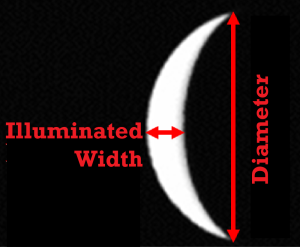Measure Venus’s Phases
Note: use a mouse instead of a trackpad or touchscreen to limit frustration while using Afterglow.
Click "Next" above to see the step-by-step instructions.
Alternate Format: Video Instructions
- Follow along with this tutorial video
- Note that Dr. Reichart uses some different vocabulary:
- He says "Illuminated Angular Distance" where we say "Illuminated Width",
- He says "Angular Diameter" where we say "Diameter."
Alternate Format: Written Instructions
- You will use archival data for this. If you have your own Venus image you will also use that one.
- Open each image in Afterglow using the "Open Files" icon in the upper left.
- File path: Sample/Astro 101 Lab/Lab 3 - Galilean Revolution/Venus/[filename].fits
- Open each image in Afterglow using the "Open Files" icon in the upper left.
- Measure the the illuminated angular distance and the angular diameter on each Venus image.
- Open each image and set the display to "Bright Target."
- Open the plotter tab
- For each image take two measurements, and record them in the Skynet 3 Observation Report.
- Illuminated Width
- Diameter

- Illuminated widths will always be smaller than diameters.
- For each image, calculate the phase:
- The phase is the illuminated width divided by the diameter. It will be between 0 and 1.
- [latex]phase=\frac{illuminated\: width}{diameter}[/latex]
Media Attributions
- Venus Phases Cropped
